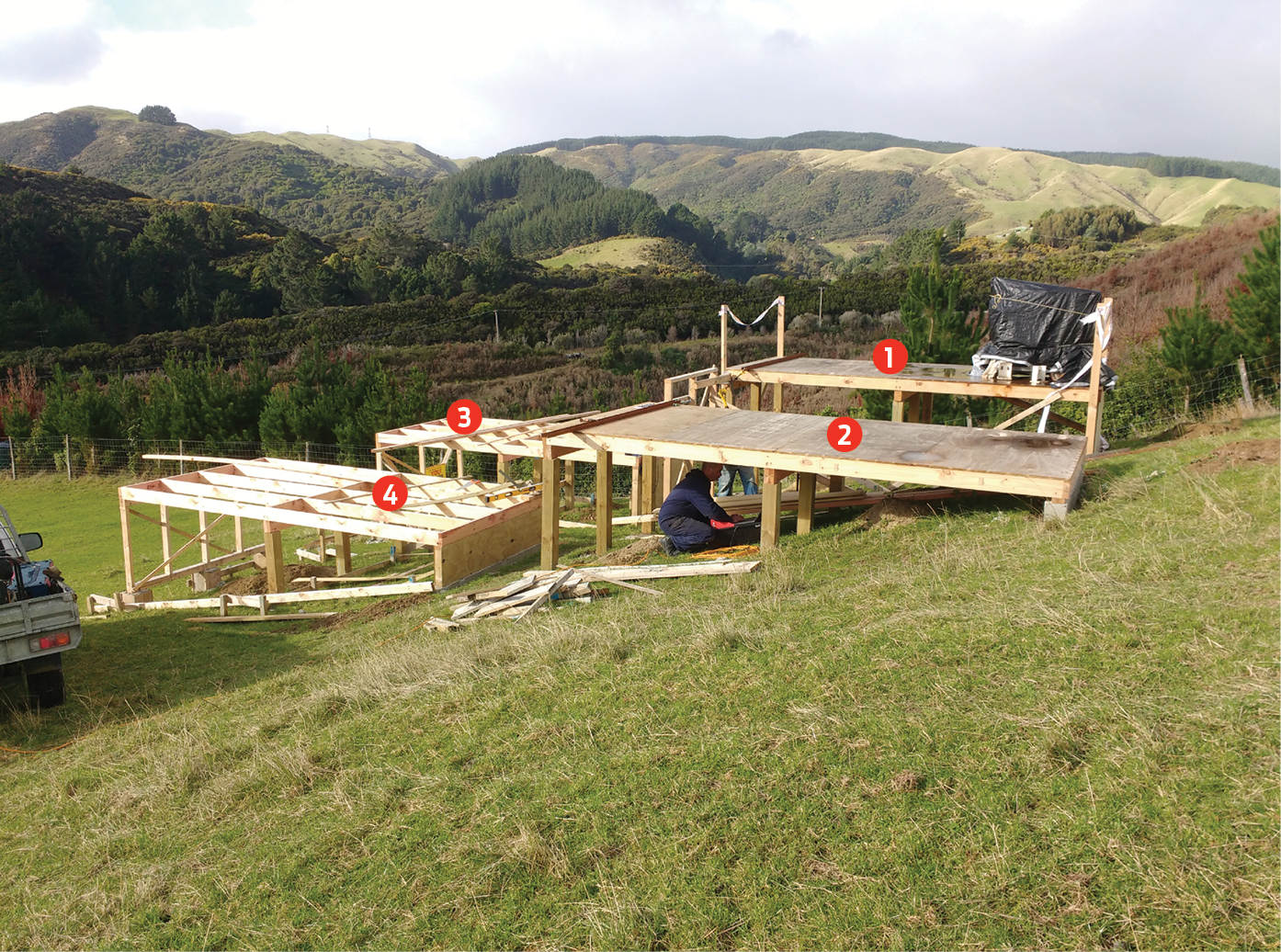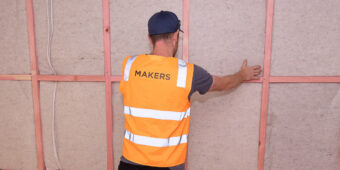RETROFITTING FOUNDATIONS ON SLOPES
27 May 2021, Learn, Prove Your Know How, Technical

Houses built on slopes performed poorly in recent earthquakes. Now BRANZ experiments have shown how to retrofit pre-1960s timber house foundations to improve seismic performance
Many New Zealand houses have been built – and continue to be built – with timber foundations on sloping sites.
Observations from the Christchurch earthquake of 2011, and the subsequent BRANZ House Condition Survey, showed that houses on these sites tended to perform poorly. There is a need to improve the design of these to ensure greater resilience.
More resilient houses will mean a greater opportunity for residents to remain in their houses following a major earthquake – an important consideration in the aftermath of such an event.
Differing stiffness causes problems
The problem arises because the uphill foundation of these types of houses usually consists of a squat foundation wall, whereas the downhill foundation is a tall structure of piles or poles. The uphill edge, therefore, has a stiff foundation under lateral loading, and the downhill edge has a flexible foundation.
Under earthquake action across the slope, there is potential for large displacements on the tall flexible foundation structure on the downslope edge of the building, causing it to twist about the squatter, stiffer uphill foundation (Figure 1).
The deflections from the twisting action adds to the lateral displacement, potentially resulting in a progressive rotational failure. This difference in stiffness and the potential torsional problem is not addressed in NZS 3604:2011 Timber-framed buildings, where only the foundation’s strength is considered, nor in a specific engineering design if only strength is considered.

Figure 1: Twisting of floor on hillside under earthquake action
Four different foundations tested
To shed light on this issue, BRANZ partnered with Victoria University of Wellington to conduct an experimental study, jointly funded by the Building Research Levy and EQC. Four tests were carried out on representative foundations on a sloping site on a farm close to BRANZ, just north of Wellington. Scala penetrometer testing on the sloping site used for the test established that the soil bearing properties closely approximated the lower limit of ‘good ground’, as defined by NZS 3604:2011.
Each test specimen consisted of a timber-framed plywood-clad floor of approximately 2.4m across the slope by 4.8m up and down the slope. All four floors had a concrete foundation wall supporting the upper edge and piles at the lower edge. See Figure 2 (main photo) for the floors under construction:
- Floor 1: Standard NZS 3604:2011 construction using braced piles at the lower edge of the floor.
- Floor 2: Standard NZS 3604:2011 construction using ordinary piles.
- Floor 3: Typical pre-1960s construction using concrete piles and jack studs with cut between braces (see Figure 3a).
- Floor 4: Typical pre-1960s construction using concrete piles and jack studs and clad with horizontal timber weatherboards (see Figure 3b).

Figure 3: Typical pre-1960s downhill subfloor wall construction
Weight added and shaking begins
Dead weight was added to the floor of each specimen to replicate the true mass of the superstructure associated with the supporting foundation.
Preliminary tests were carried out to measure the stiffness and natural frequency of each floor, then each was excited dynamically by a counter-rotating shaker to simulate the effects of an earthquake. The shaker had the capability to apply lateral and frequency. The displacement of the specimen was monitored along with the displacement response of the structure with respect to the ground.
Piles rocked noticeably
It was clear that all pile foundations rocked quite noticeably under the lateral loading, creating gaps between soil and concrete at the end of the tests. This was also observed in the foundations of some Christchurch buildings after the earthquakes.
The NZS 3604:2011 floors performed overall as expected, although the rocking of the foundations was a little greater than anticipated. Apart from the rocking of the concrete foundations, the floors deflected back and forth in time with the shaker. There was twisting in the plan of the floor, because of the unevenness in height of the foundations caused by the ground slope. There was some buckling of the diagonal brace, and movement at the brace connections to the piles.
Retrofitting improved performance
During the shaking, deflections of the pre-1960s floors increased, almost to the point of imminent collapse in one test. To address this, the pre-1960s foundations were retrofitted to improve their performance:
Both floors 3 and 4 had infill concrete foundation walls cast between the existing piles (see Figure 4a and 4b).
Floor 3 had all frame joints strengthened with the installation of galvanised brackets at all stud-to-plate joints (Figure 4a).
Floor 4 had sheets of 9mm plywood nailed to the inside face of the jack stud wall (see Figure 4b).
These retrofit measures greatly improved the floor performance.
Under the initial shaking, the pre-1960s floor structures proved to be quite flexible. However, after retrofitting, they stiffened up considerably, as anticipated by the measurements taken in the preliminary tests. Figure 5 shows the relative stiffness and the increase in relative stiffness in both pre-1960s foundations.

Figure 4: Pre-1960s downhill subfloor wall construction after strengthening

Figure 5: Change in relative stiffness of pre-1960s downhill walls after strengthening
Results can be applied to houses
A substantial increase in performance to the pre-1960s foundations was achieved by the retrofit solutions.
The infill foundation walls were very effective at stabilising the isolated pile foundations, although these could be difficult to construct on sites with limited underfloor access.
Nominal reinforcement was used in the wall, together with grouted in starters to all the piles. In the interests of buildability, starters could be reduced to end piles only as the centre piles are book-ended by foundation walls on each side.
The ply sheeting was very straightforward to install, as were the extra connectors on the jack stud braces. All solutions are likely to be inexpensive for most residential foundations.
Article by Roger Shelton, BRANZ Senior Structural Engineer. This article was first published in Issue 183 of BRANZ Build magazine. www.buildmagazine.org.nz. Words and figures supplied by BRANZ.
Register to earn LBP Points Sign in
1 Comment
Leave a Reply
You must be logged in to post a comment.




interesting